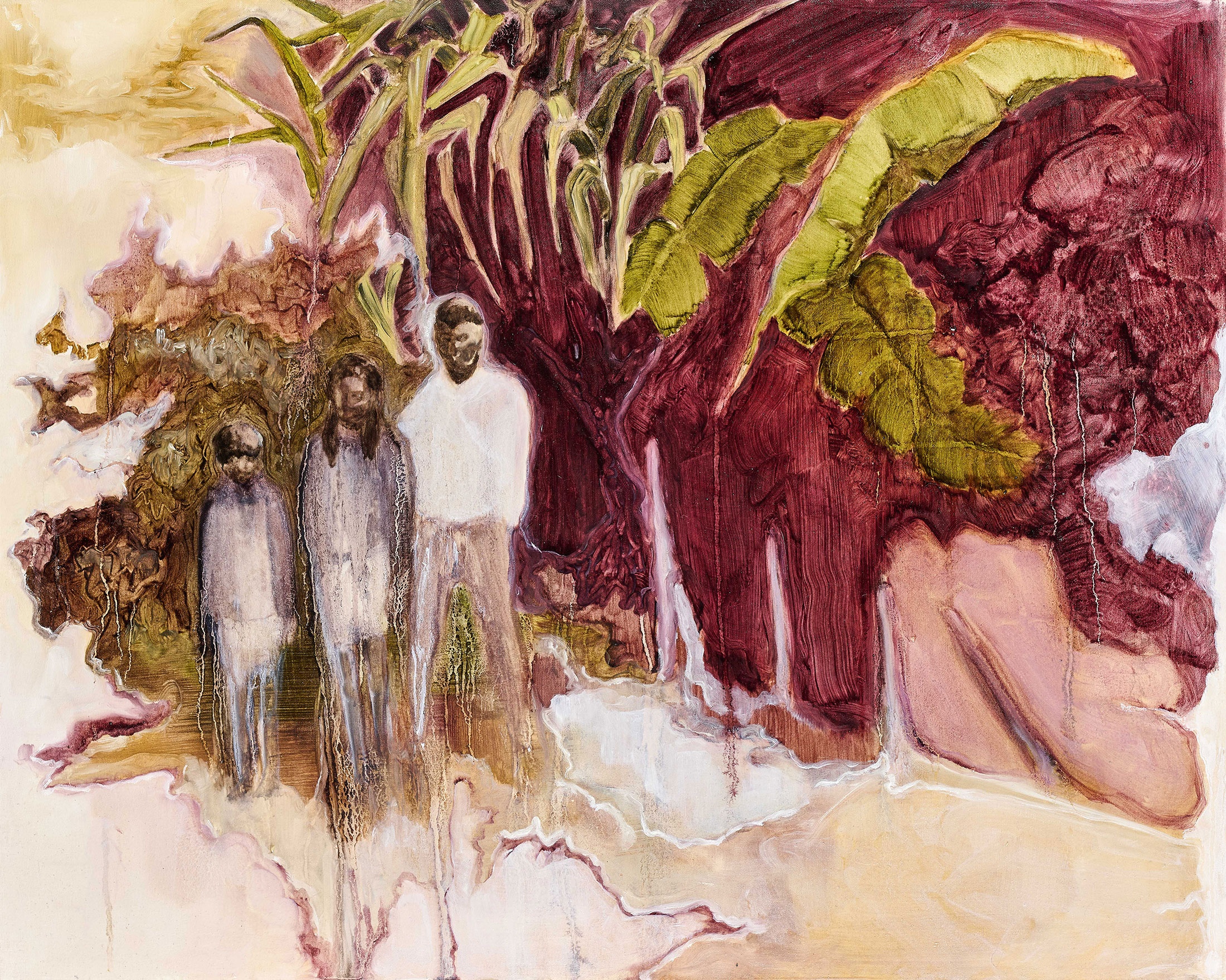Ravelle Pillay
Pillay’s way with colour is provoking and unsettling. Looking at her paintings feels more like looking at the memory of a colour that has been reconstructed from sense rather than seeing; as if someone asked, “What is red?” and they who answered hoped to remember. In this painting, the artist’s experiments with negative space and the application of oil inspires as much intrigue and intensity as do the three spectral figures haloed by vegetation. Banana fronds and sugar cane plants appear to point at the family. These plantation crops are a recurring motif in Pillay’s work, where slave-like conditions were imposed on indentured labourers sent to work in these fields. Are these plants the family’s past, or their future? And what of the swathe of deep colour like a bloodstain across the canvas – somehow mauve, pink, blue, purple. And then – suddenly, startlingly – red.
b.1993, Durban
“This is my favourite bit, right here,” Ravelle Pillay says, bending to a bottom lefthand corner of canvas. The artist runs her hand above the painting, mapping out an area where the paint has dripped, just so; where the linseed oil (the artist eschews working with solvents) that Pillay applies (almost, as if it were the paint itself) has parted, pushed, prodded at the contents of the canvas, effecting its transformation. It wouldn’t be quite right to call this favoured area a piece of pure abstraction. But neither would it be entirely wrong, to read it this way. It is one in which no figures appear. No narrative is present in the bottom lefthand corner of the painting, other than the one enacted by the paint and the artist’s choices with her materials. That Pillay is of Southeast Asian and British descent, born in South Africa, informs the subject matter of her paintings. Archival photographs and imagery of Sri Lanka and India, both familial and found, build a memory bank for the artist of the places her ancestral family left behind, coerced to work as indentured labourers on the sugar plantations of Natal. Having travelled from one British colony, they found themselves trapped in another. In South Africa, the post-colonial moment segued into apartheid, overseeing the continued ruthless suppression of black and brown bodies. It is from the mire of these complex histories that Pillay’s figures appear, materialising as if from watery graves, stolen gardens, and excavated land. Yet the themes in her work are never elevated above the fact that this is paint, and that Pillay relishes in working with paint, experimenting with the alchemical reactions of oils and probing the limits of colours (before the colours fall from within their own spectrum, into that of another – a greener red, a yellower blue). Pillay’s techniques mirror the moment of remembering and the feeling of having forgotten – where paint can sediment, or liquid can be used to bury and wash over, or to reveal.
